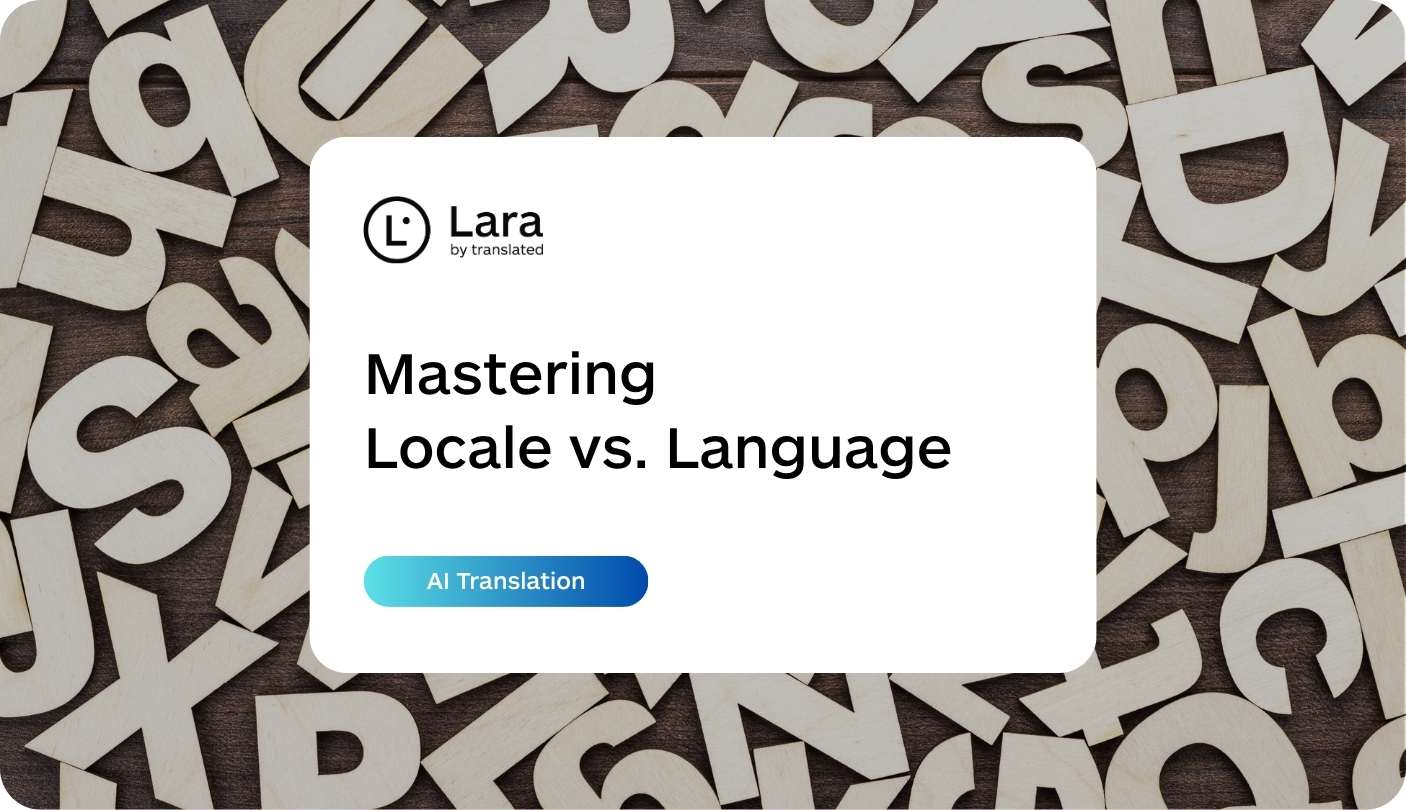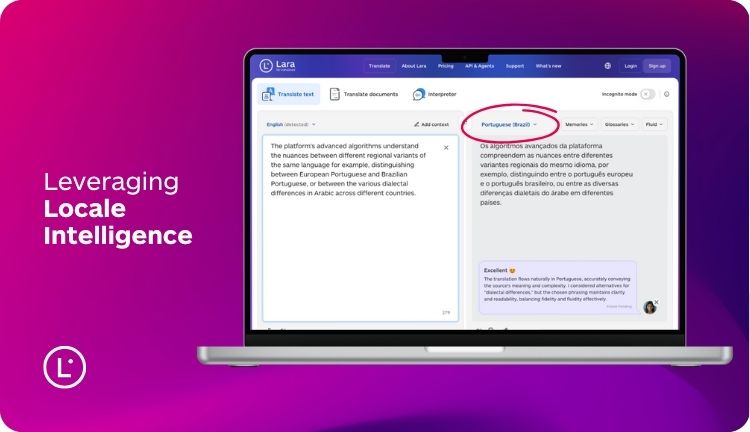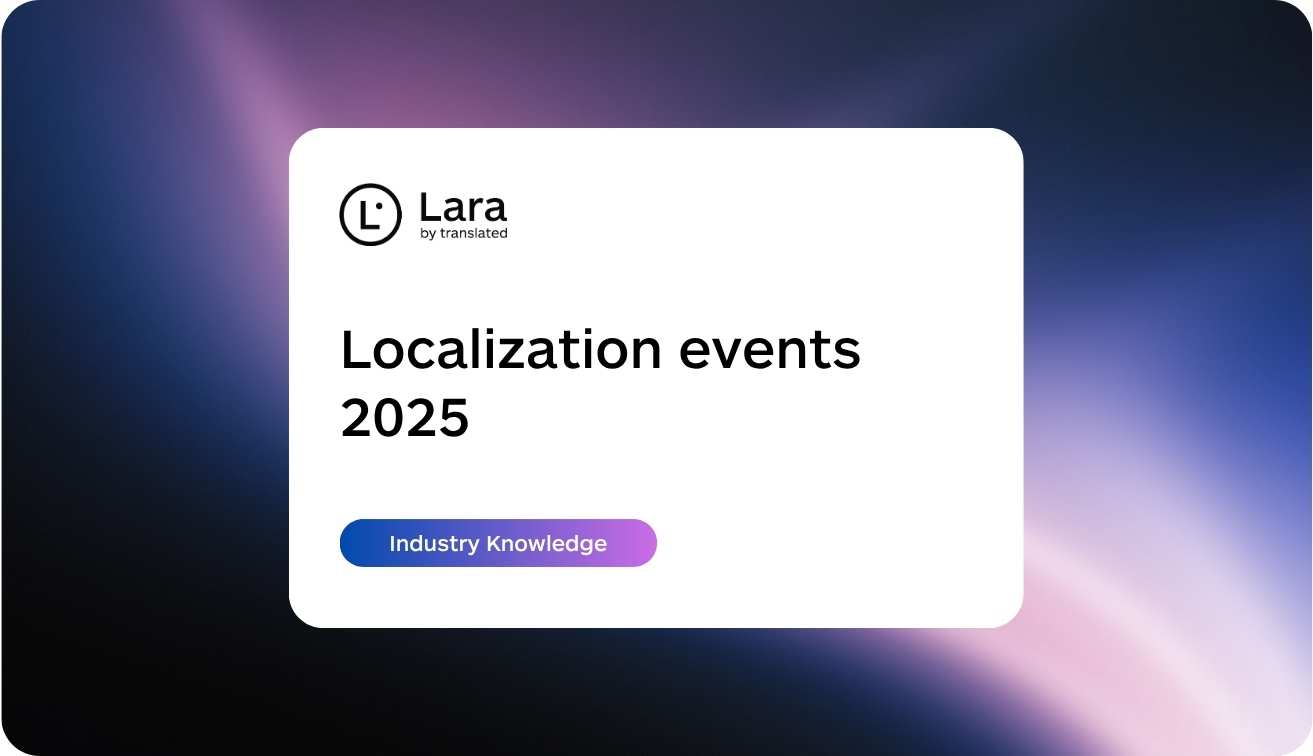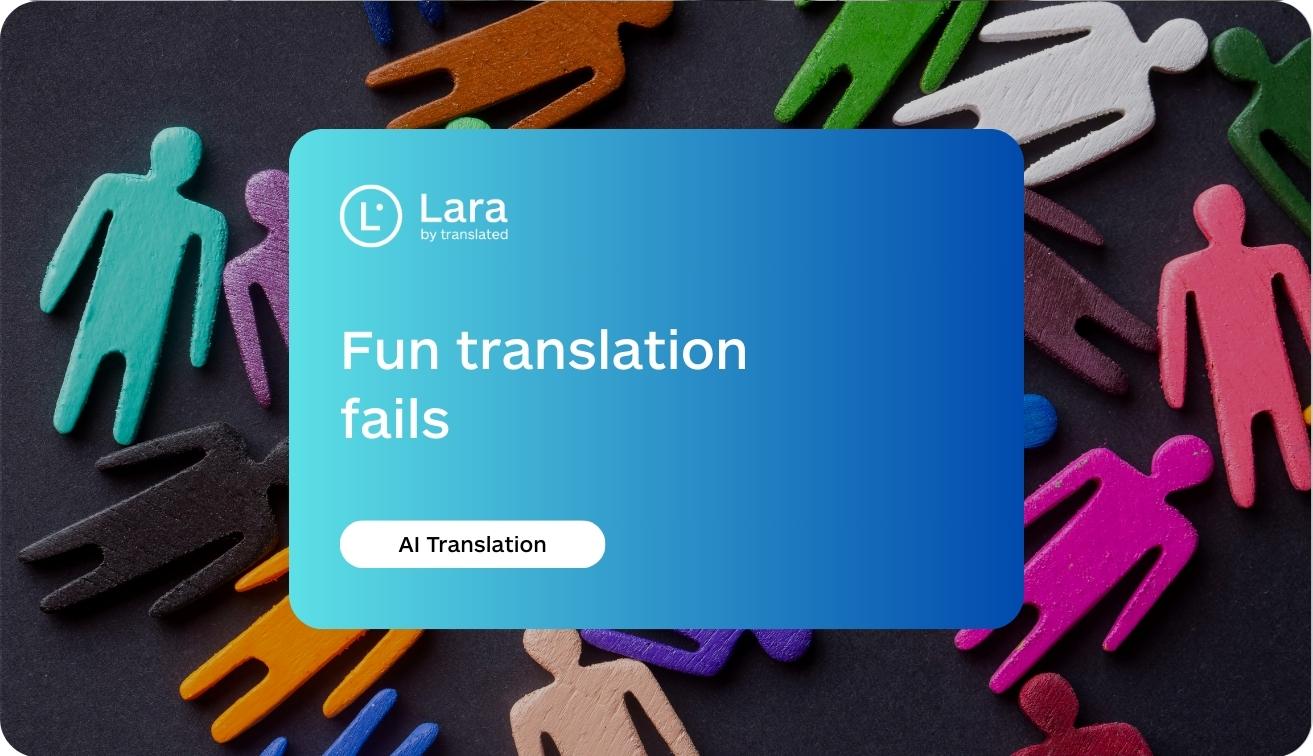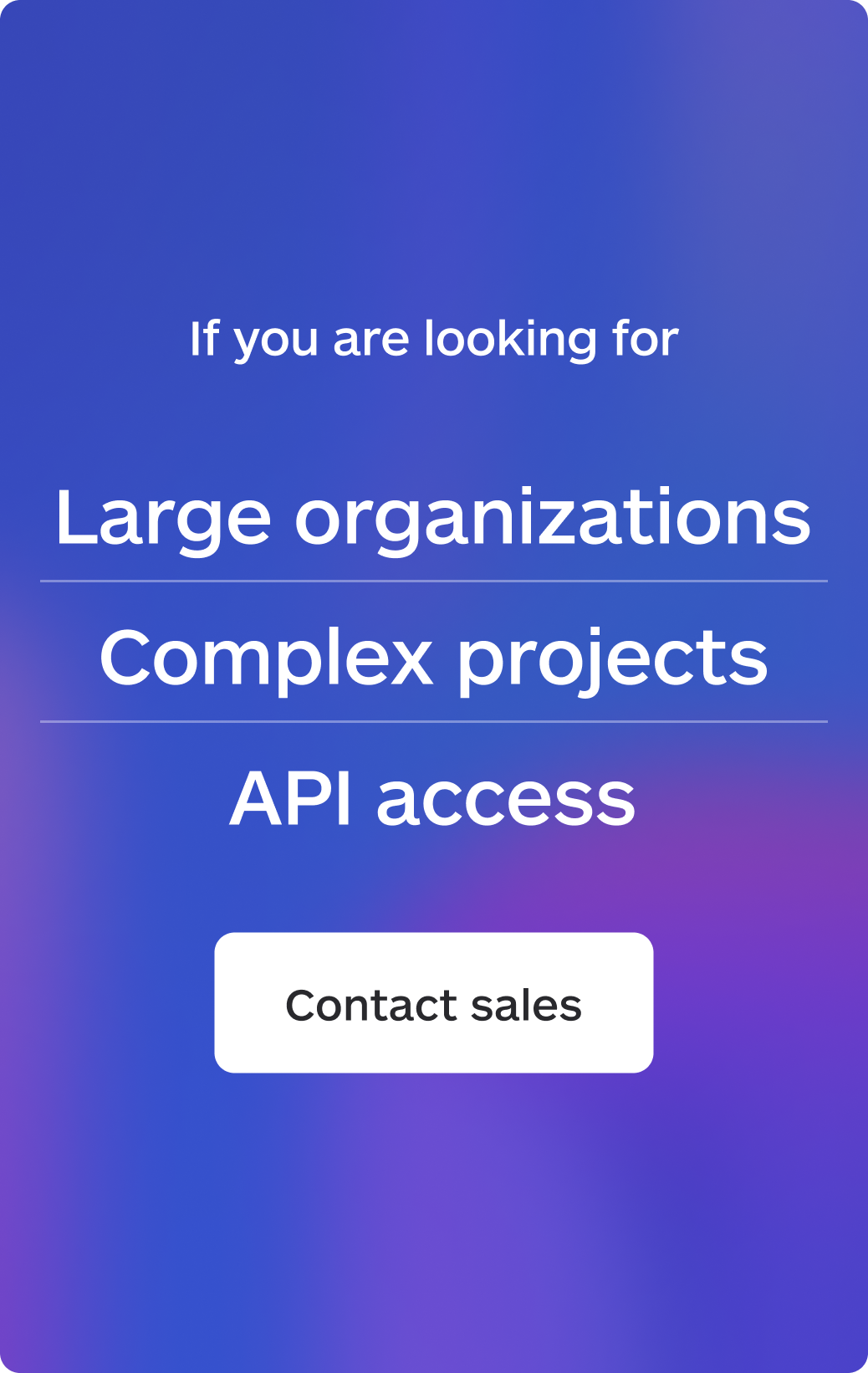Think “language” and “locale” mean the same thing? You’re not alone but that mix-up could hurt your global strategy.
These two terms might sound similar, but they play very different roles when it comes to connecting with users around the world. And if you get them right, you’re one step closer to building a product that truly feels local everywhere. So what is the difference between locale and language?
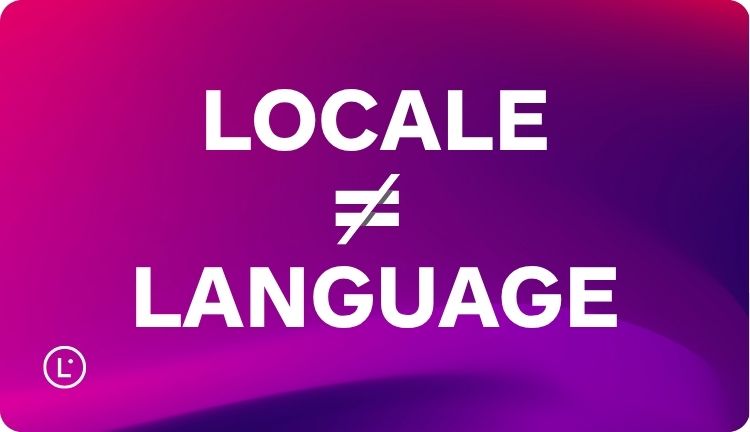
Here’s what you need to know to avoid confusion and get your internationalization efforts on the right track.
The fundamental difference between locale and language
At its core, a language is a system of communication with specific vocabulary, grammar rules, and syntax that allows people to convey ideas and information. When we talk about English, Spanish, or Mandarin, we’re referring to distinct linguistic systems used by different communities around the world.
A locale, however, encompasses much more than just language. It represents a specific combination of language, region, cultural conventions, and user preferences that define how information should be presented to users in a particular geographic or cultural context. The locale identifier typically combines a language code with a region code (like “en-US” for American English or “fr-CA” for Canadian French), creating a comprehensive framework for adapting content to specific target audiences.
This difference between locale and language becomes particularly important when developing global products or content strategies. While translating text addresses the language component, truly effective localization requires adapting to the full spectrum of locale-specific elements that shape user expectations.
Components of a locale: beyond simple translation
A locale is composed of several key elements that collectively define how content should be presented to users in specific regions:
- Language: The primary linguistic system (e.g., English, Arabic, Japanese)
- Region: The specific geographic area where certain conventions are followed (e.g., United States, United Kingdom, Australia)
- Script: The writing system used (particularly important for languages with multiple script options)
- Cultural preferences: Regional customs, taboos, and expectations that affect content appropriateness
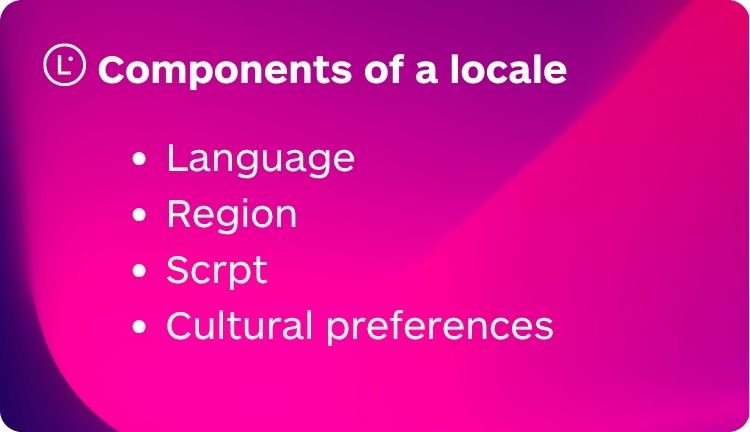
These components influence numerous aspects of user experience, including:
Format variations by locale
Different locales have distinct preferences for how information should be structured and presented:
- Date formats: MM/DD/YYYY (US) vs. DD/MM/YYYY (UK, Australia) vs. YYYY/MM/DD (Japan, China)
- Time formats: 12-hour (with AM/PM) vs. 24-hour systems
- Number formatting: Decimal separators (1,000.00 vs. 1.000,00) and grouping conventions
- Currency symbols and positions: $100 (US) vs. 100€ (many European countries)
- Measurement units: Imperial vs. metric systems
- Address formats: Varying conventions for street address, postal code placement, etc.
Understanding these variations is essential when developing products or content for international audiences. Using inappropriate formats can create confusion, appear unprofessional, or even render information unusable.
Language settings vs. locale settings: technical implementation
When implementing internationalization in software applications, websites, or digital products, developers must distinguish between language settings and locale settings to ensure proper adaptation to user needs. Difference between locale and language settings:
Language settings typically control only the translation of text elements throughout the interface. They determine which language resources (strings, labels, error messages) are displayed to the user.
Locale settings, in contrast, influence a broader set of parameters, including:
- Regional formatting preferences (dates, numbers, currencies)
- Cultural adaptations (images, colors, symbols)
- Content variations (product offerings, pricing, compliance notices)
- Technical specifications (character encoding, text direction)
Most modern development frameworks provide mechanisms for implementing both language and locale-based customization. For example, the Model Context Protocol (MCP) offers a standardized approach for managing contextual information in AI systems, which can include locale-specific parameters to improve translation accuracy and cultural relevance.
Examples of locale codes and standards
To standardize locale representation across systems, internationalization standards like ISO use consistent codes for languages and regions. Here are some common locale code examples:
- en-US: English (United States)
- en-GB: English (Great Britain)
- es-MX: Spanish (Mexico)
- es-ES: Spanish (Spain)
- fr-FR: French (France)
- fr-CA: French (Canada)
- pt-BR: Portuguese (Brazil)
- pt-PT: Portuguese (Portugal)
- zh-CN: Chinese (Simplified, China)
- zh-TW: Chinese (Traditional, Taiwan)
It’s important to note the difference between a locale code and a language code. A language code (like “en” for English) only identifies the linguistic system, while a locale code (like “en-US”) specifies both language and regional context.
The format typically follows the pattern of “[language code]-[region code]” where:
- Language codes are defined by ISO 639-1 (two-letter codes) or ISO 639-2 (three-letter codes)
- Region codes are defined by ISO 3166-1 (two-letter country codes)
Some systems use underscores instead of hyphens (e.g., “en_US” vs. “en-US”), but the underlying structure remains the same.
Why locale matters in software and content development
Implementing proper locale-based customization has become increasingly important as digital products reach global audiences. Here’s why attention to locale details matters:
User experience and trust
Users expect digital experiences that reflect their cultural norms and preferences. When an application automatically displays dates, times, currencies, and measurements in familiar formats, it creates a seamless experience that builds trust and confidence.
Research shows that 65% of users prefer content in their native language, and 40% won’t purchase from websites that aren’t available in their preferred language or that display information in unfamiliar formats (source: CSA Research, “Can’t Read, Won’t Buy – B2C”). Beyond mere translation, adapting to locale expectations signals respect for the user’s cultural context.
Compliance and legal requirements

Different regions have specific requirements regarding:
- Data privacy disclosures
- Consumer protection information
- Industry-specific regulations
- Tax and pricing display standards
Locale-sensitive adaptations ensure compliance with these varying requirements, reducing legal risks when operating across multiple jurisdictions.
Practical applications of locale in translation systems
Modern translation systems leverage locale information to improve output quality and relevance. By understanding both the source and target locales, these systems can:
- Select appropriate terminology for specific regional variants
- Apply correct formatting conventions automatically
- Consider cultural context when translating ambiguous terms
- Preserve intent while adapting content for regional audiences
How Lara Translate leverages locale intelligence
Lara Translate stands at the forefront of locale-aware translation technology, providing solutions that go beyond simple word-for-word translation to deliver truly localized content. By incorporating sophisticated locale-based customization features, Lara Translate ensures that your content resonates with target audiences regardless of their cultural or regional context.
The platform’s advanced algorithms understand the nuances between different regional variants of the same language for example, distinguishing between European Portuguese and Brazilian Portuguese, or between the various dialectal differences in Arabic across different countries. This language-specific intelligence enables more natural, contextually appropriate translations that reflect how people actually communicate in specific regions.
Lara Translate combines AI efficiency with cultural awareness to deliver translations that maintain both linguistic accuracy and cultural relevance. This comprehensive approach to localization helps businesses build stronger connections with international audiences while avoiding cultural missteps.
Locale setup in CMS platforms: best practices
Implementing effective locale support in Content Management Systems (CMS) requires thoughtful planning and structure. Consider these best practices:
URL structure
Choose a consistent approach to representing different locales in your URL structure:
- Subdirectories (example.com/en-us/, example.com/fr-ca/)
- Subdomains (en-us.example.com, fr-ca.example.com)
- Country-code Top-Level Domains (example.com, example.co.uk)
Each approach has implications for SEO, maintenance, and user experience. Subdirectories often provide the best balance of SEO value and management simplicity.
Hreflang implementation
Proper implementation of hreflang tags is crucial for SEO, as it helps search engines understand the relationship between pages in different languages or targeting different regions. These tags indicate to search engines which version of a page should be shown to users in specific languages or locales.
<link rel=”alternate” hreflang=”en-us” href=”https://example.com/en-us/page” />
<link rel=”alternate” hreflang=”en-gb” href=”https://example.com/en-gb/page” />
<link rel=”alternate” hreflang=”fr-fr” href=”https://example.com/fr-fr/page” />
Content inheritance and fallbacks
Establish clear fallback mechanisms for when content isn’t available in a user’s preferred locale:
- Try to serve content in the user’s exact locale (e.g., fr-CA)
- If unavailable, fall back to the generic language (e.g., fr)
- If that’s unavailable, fall back to your default language (e.g., en)
This tiered approach ensures users always receive the most relevant content possible based on their preferences.
Locale targeting for multilingual content: strategic considerations
Developing a comprehensive strategy for locale targeting for multilingual content requires balancing resources with market priorities. Here are key considerations considering the difference between locale and language:
Market research and prioritization
- Analyze your target markets to identify potential locale requirements
- Prioritize locales based on market size, growth potential, and competition
- Consider both language and regional variants when planning content adaptation
Content adaptation levels
Not all content requires the same level of localization. Consider a tiered approach:
- Tier 1: Full localization (translation plus complete cultural adaptation)
- Tier 2: Translation with basic formatting adaptations
- Tier 3: Machine translation with human review
- Tier 4: Machine translation for gisting purposes
This approach allows efficient allocation of resources based on content importance and market priorities.
Testing and validation
Always test localized content with native speakers from the target locale to ensure it meets cultural expectations and contains no unintended errors or cultural faux pas. Automated testing tools can verify technical elements like date formats and character display, but human review remains essential for cultural appropriateness.
FAQs
What is the main difference between a language and a locale?
A language is a system of communication with specific vocabulary and grammar rules, while a locale encompasses language plus regional and cultural elements that define how information should be formatted and presented to users in a specific geographic context.
How do I decide which locales to support for my product?
Base your decision on market research, business goals, and resource constraints. Prioritize locales with the highest potential return on investment, considering factors like market size, competition, and customer preferences. Start with major markets and expand gradually based on performance and demand.
Can I use machine translation to create locale-specific content?
Machine translation can be a starting point, especially for high-volume content, but should typically be reviewed by human translators familiar with the target locale’s cultural nuances. While AI translation technology has improved dramatically, human oversight remains valuable for ensuring cultural appropriateness and contextual accuracy.
Does supporting multiple locales require separate websites?
Not necessarily. Modern CMS platforms and frameworks support multilingual and multilocale content within a single website architecture. With proper implementation of language detection, content inheritance, and locale-specific formatting, you can efficiently manage multiple locales from a centralized system.
How do locales affect SEO strategy?
Locales significantly impact SEO through factors like:
- Keyword selection (regional variations in search terminology)
- Content relevance (addressing locale-specific concerns)
- Technical implementation (hreflang tags, URL structure)
- User engagement metrics (bounce rates, time on site)
A comprehensive SEO strategy should account for these locale-specific elements to maximize visibility in target markets.
This article is about:
- The difference between locale and language in content localization
- How locale identifiers combine language and region codes to reflect user preferences
- The impact of locale-based customization on translation quality and cultural relevance
- Best practices and technical strategies for implementing locale targeting in multilingual content
- Examples of locale codes and international standards used in global software and CMS platforms
Have a valuable tool, resource, or insight that could enhance one of our articles?
Submit your suggestion — we’ll be happy to review it and consider it for inclusion to enrich our content for our readers!
